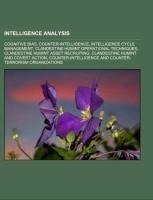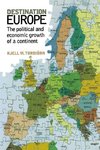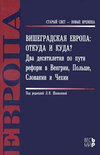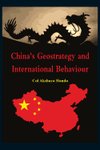
Intelligence analysis
Source: Wikipedia. Pages: 110. Chapters: Cognitive bias, Counter-intelligence, Intelligence cycle management, Clandestine HUMINT operational techniques, Clandestine HUMINT asset recruiting, Clandestine HUMINT and covert action, Counter-intelligence and counter-terrorism... Viac o knihe
Produkt je dočasne nedostupný
23.85 €
bežná cena: 27.10 €
O knihe
Source: Wikipedia. Pages: 110. Chapters: Cognitive bias, Counter-intelligence, Intelligence cycle management, Clandestine HUMINT operational techniques, Clandestine HUMINT asset recruiting, Clandestine HUMINT and covert action, Counter-intelligence and counter-terrorism organizations, Intelligence collection management, Intelligence analysis management, Clandestine cell system, Intelligence cycle security, Intellipedia, Words of Estimative Probability, Cognitive traps for intelligence analysis, A-Space, Traffic analysis, Mercyhurst College Institute for Intelligence Studies, Analysis of Competing Hypotheses, OODA loop, Structured Geospatial Analytic Method, Counterintelligence failures, Global Intelligence Forum, Richards Heuer, National Intelligence Estimate, National Defense Intelligence College, Zendian Problem, Intelink, Analytic confidence, Open Source Information System, Pocket litter, Espionage organizations, Intelligence source and information reliability, Bureaupedia, E-Guardian, Defense Intelligence Analysis Center, National Operational Intelligence Watch Officer's Network. Excerpt: Counterintelligence or counter-intelligence (see spelling differences) (CI) refers to efforts made by intelligence organizations to prevent hostile or enemy intelligence organizations from successfully gathering and collecting intelligence against them. National intelligence programs, and, by extension, the overall defenses of nations, are vulnerable to attack. It is the role of intelligence cycle security to protect the process embodied in the intelligence cycle, and that which it defends. A number of disciplines go into protecting the intelligence cycle. One of the challenges is there is a wide range of potential threats, so threat assessment, if complete, is a complex task. Many governments organize counterintelligence agencies separate and distinct from their intelligence collection services for specialized purposes. In most countries the counterintelligence mission is spread over multiple organizations, though one usually predominates. There is usually a domestic counterintelligence service, perhaps part of a larger law enforcement organization such as the FBI in the United States. Great Britain has the separate Security Service, also known as MI5, which does not have direct police powers but works closely with law enforcement called the Special Branch that can carry out arrests, do searches with a warrant, etc. Russia's major domestic security organization is the FSB, which principally came from the Second Chief Directorate of the USSR KGB. Canada separates the functions of general defensive counterintelligence (contre-ingérence), security intelligence (the intelligence preparation necessary to conduct offensive counterintelligence), law enforcement intelligence, and offensive counterintelligence. Military organizations have their own counterintelligence forces, capable of conducting protective operations both at home and when deployed abroad. Depending on the country, there can be various mixtures of civilian and military in foreign operations. For example, w
- Vydavateľstvo: Books LLC, Reference Series
- Formát: Paperback
- Jazyk:
- ISBN: 9781156505892


 Anglický jazyk
Anglický jazyk 




 Nemecký jazyk
Nemecký jazyk 
 Ruský jazyk
Ruský jazyk 



